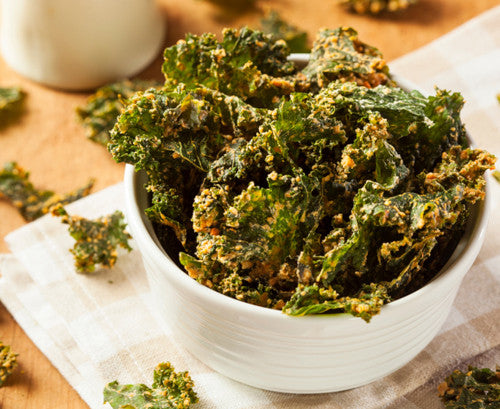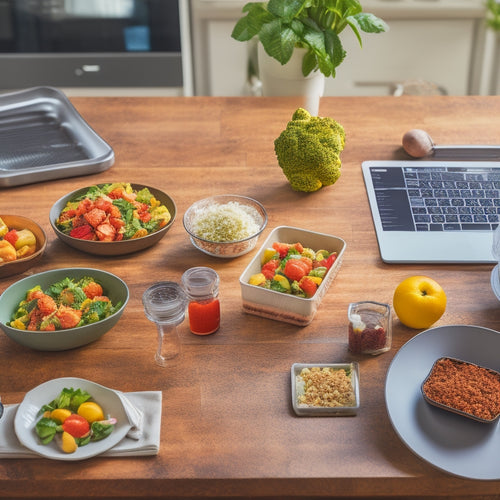
5 Essential Tips for a Sparkling Clean Kitchen
Share
You can achieve a sparkling clean kitchen by implementing a few strategic habits and systems. Start by decluttering your countertops, sorting items into categories, and finding hidden storage areas for non-essentials. Next, create a schedule for daily and weekly cleaning tasks, prioritizing high-traffic areas. Tackle tough stains and grime by understanding their removal science and developing daily cleaning habits. Organize your cabinets by categorizing items and assigning homes for each group. Finally, shine and disinfect surfaces with natural solutions and microfiber cloths. By following these essential tips, you'll be well on your way to a kitchen that shines - and there's more to explore to maintain that sparkle.
Key Takeaways
• Clear clutter and declutter your kitchen countertops to create a sense of order and efficiency.
• Establish a daily and weekly cleaning schedule to maintain a sparkling clean kitchen with minimal effort.
• Use effective techniques to tackle tough stains and grime, and prevent buildup with daily cleaning habits.
• Organize your kitchen cabinets by purging unnecessary items, categorizing, and assigning a home for each group.
• Shine and disinfect surfaces using natural cleaning solutions, microfiber cloths, and extra attention to high-touch areas.
Declutter Your Kitchen Countertops
Clear everything off your kitchen countertops and sort items into categories, such as baking supplies, cooking utensils, and appliances, to give yourself a clear view of what you need to tackle. This is the first step in achieving a clutter-free kitchen that exudes a sense of power and control.
As you sort, be honest with yourself about what you really need to keep on your countertops. Consider a minimalist decor approach, where only the essentials are on display. For everything else, find a home in hidden storage areas, such as cabinets, drawers, or a kitchen cart.
Assign a specific spot for each item, making it easy to find what you need when you need it. By doing so, you'll create a sense of order and efficiency in your kitchen. Remember, a clutter-free kitchen isn't only aesthetically pleasing, but it also helps you stay focused and in control.
Create a Cleaning Schedule
Establish a routine by setting aside specific times each day and week to tackle cleaning tasks, ensuring your kitchen stays sparkling and organized.
Daily maintenance is key to preventing clutter and grime buildup. Set aside 10-15 minutes each day to wipe down countertops, sink, and stove, and sweep/vacuum the floor. This daily routine will make weekly tasks much more manageable.
For your weekly tasks, prioritize areas that need the most attention. Allocate specific days for tasks like cleaning the refrigerator, oven, and windows. Consider setting aside one day for deeper cleaning tasks, such as scrubbing the sink or reorganizing your pantry.
When creating your schedule, be realistic about how much time you have available and focus on the most critical areas. By setting priorities and creating an efficient cleaning schedule, you'll be able to maintain a sparkling clean kitchen with minimal effort.
Tackle Tough Stains and Grime
By understanding the science behind stains and grime, you'll be better equipped to tackle even the toughest messes in your kitchen. When it comes to stain removal, effective techniques involve identifying the type of stain and using the right cleaning solution. For example, oil-based stains require a solvent-based cleaner, while water-based stains need a water-based solution. Always blot, don't wipe, to prevent spreading the stain further.
To prevent grime buildup, establish daily habits that keep your kitchen clean and tidy. Wipe down countertops and appliances after every meal, and sweep or vacuum the floor daily. Regularly clean your sink, stove, and refrigerator to prevent grime from accumulating.
Additionally, make it a habit to clean as you go, washing dishes immediately after meals and putting away utensils and appliances after use. By incorporating these habits into your daily routine, you'll reduce the likelihood of grime buildup and make cleaning easier in the long run.
Organize Your Kitchen Cabinets
About 75% of your kitchen's storage space is likely taken up by cabinets, making them an important area to optimize for maximum efficiency and ease of use.
To maximize space, start by purging your cabinets of any unnecessary or duplicate items. Next, categorize your remaining items into groups, such as baking supplies, cooking utensils, and dinnerware. Assign a home for each group in your cabinets, and use dividers or baskets to keep similar items together.
Label containers and shelves so you can easily find what you need, and consider installing adjustable shelves or pull-out drawers to make the most of your cabinet space. Don't forget to store heavy items at the bottom and lighter items towards the top to prevent clutter from building up.
Shine and Disinfect Surfaces
With your kitchen cabinets now organized and clutter-free, turn your attention to the surfaces that come into contact with your food and cooking utensils, and give them a thorough shine and disinfect to prevent the spread of germs and bacteria.
To achieve a streak-free shine and proper disinfection, you'll need the right tools and techniques. Here's what you'll need to do:
-
Mix natural cleaning solutions, such as white vinegar and water, in a spray bottle to create an effective and eco-friendly cleaner.
-
Use microfiber cloths to wipe down surfaces, as they're gentle yet effective at picking up dirt and grime.
-
Pay special attention to high-touch areas like countertops, faucets, and doorknobs, which require extra attention to prevent the spread of germs.
Frequently Asked Questions
How Often Should I Replace My Kitchen Trash Cans?
You should replace your kitchen trash cans every 1-2 years, depending on usage and maintenance. Regularly cleaning and disinfecting your cans helps with odor control, while considering recycling options can improve waste disposal and overall trash can maintenance.
What's the Best Way to Clean Burnt Pots and Pans?
To tackle burnt pots and pans, you'll need boiling water, baking soda, vinegar, and lemon juice. Start by soaking them in boiling water and baking soda, then scrub with a mixture of equal parts vinegar and lemon juice for a sparkling finish.
Can I Use Bleach to Clean My Kitchen Sink?
You're likely unaware that 80% of sink germs come from the drain, not the sink itself! When cleaning your kitchen sink, skip bleach, which can damage seals, and opt for gentle cleaning solution alternatives like baking soda and vinegar for a safer, more effective clean, plus routine sink maintenance tips.
How Do I Remove Stubborn Sticker Residue From Appliances?
You'll easily remove stubborn sticker residue from appliances by using alternative methods like adhesive removers, baking soda, or olive oil. To prevent sticky residue, apply a small amount of cooking spray or silicone-based lubricant before applying new stickers.
Are Microfiber Cloths Effective for Cleaning Kitchen Floors?
You've conquered the sticker residue battle, now tackle kitchen floors! Microfiber cloths shine here, especially when paired with effective mopping techniques and floor scrubbers. For tougher grime, try steam cleaning or a vinegar solution for a sparkling finish.
Related Posts
-

Baked Kale
Kale is one of the most healthiest and nutritious plant foods in existence and is delicious! Try these baked kale re...
-

Budget-Friendly Meal Prep Made Easy With Digital Tools
You're just a few clicks away from effortless meal prep that fits your budget. Digital tools like meal prep planners ...

